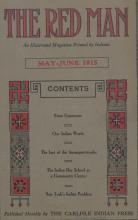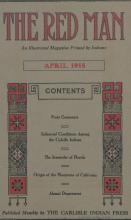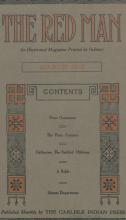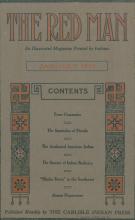New Donation: The Brockey (Charles W. Buck) Collection
The Carlisle Indian School Digital Resource Center has recently received a wonderful donation of 11 original images related to the Carlisle Indian School from the family of Brockey (Charles W. Buck) (Piegan). Brockey attended the school from 1890 to 1895 and collected these items during his studies.






